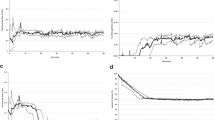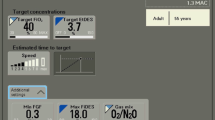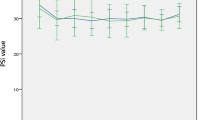Abstract
Introduction. Inducing general anesthesia often involves mask ventilation using high fresh gas flow (FGF) to administer anesthetic vapor prior to endotracheal intubation. A common practice is to turn the vaporizer off when the mask is removed from the patient's face to avoid room contamination (VAPOff). An alternative approach is to leave the vaporizer on and turn the FGF to minimum to reduce the amount of vapor laden gas that can enter the room (FGFOff). The objective of this study is to compare the relative induction times and vapor costs associated with each induction strategy. Methods. Each induction method was simulated using Gasman® (MedMan Simulations, Chestnut Hill, MA) for Windows assuming a 70 kg patient. To simulate a period of mask ventilation with anesthetic vapor prior to intubation, the FGF was set to 6 l/min and the isoflurane vapor concentration to 1.2% (1 MAC) for three minutes with an alveolar ventilation of 5 l/min and cardiac output of 5 l/min. For the first simulation of the intubation period (FGFOff), FGF was turned to 150 ml/min, minute ventilation was set to zero and the vaporizer setting unchanged for one minute. Initial settings were then restored and the rate of change of anesthetic vapor concentration in the circuit (Vckt) and alveolus (Valv) followed for 10 minutes along with the cost of delivered vapor (V$). For the second simulation (VAPOff), after the initial three minutes of vapor delivery, the vaporizer was set to zero, minute ventilation was set to zero and the FGF left unchanged for one minute. The initial settings were then restored and Vckt, Valv and V$ followed for ten minutes. The cost calculation was based upon a 100 ml bottle of Isoflurane at $72/bottle. Actual gas flow was measured at the y-piece of a circle system for fresh gas flows from 0.15 to 6 l/min. Results. At the end of the simulated intubation period (minute 4), Vckt was unchanged with the FGFOff method whereas it had fallen by more than half with the VAPOff method. Using VAPOff, it took until the 6-minute mark for Vckt to return to the same concentration that existed prior to intubation at minute three. Throughout the 10 minute simulated induction, Valv using FGFOff exceeded Valv using VAPOff although the difference became small at the end of the period. V$ was essentially identical at all time points. No flow into the room was measured at the minimum fresh gas flow whereas higher fresh gas flows resulted in a significant portion of the fresh gas flowing into the room. Conclusions. The strategy of turning the FGF to minimum and leaving the vaporizer on during intubation does not contaminate the room and speeds induction by fostering a greater alveolar concentration than the VAPOff method. Cost savings are derived using FGFOff since a higher alveolar concentration is achieved at the same vapor cost. Additional cost savings are demonstrated since a low flow technique is possible immediately after intubation when using FGFOff. The practice of turning off the vaporizer during endotracheal intubation while FGF remains high should be abandoned.
Similar content being viewed by others
REFERENCES
Gar¢eld JM, Paskin S, Philip JH. An evaluation of the e¡ectiveness of a computer simulation of anaesthetic up-take and distribution as a teaching tool. Med Education 1989; 3: 457–462.
Philip JH. Gas Man an example of goal oriented com-puter-assisted teaching which results in learning. Int J Clin Monit Comput 1986; 3: 165–173.
Biro P. Anesthetic gas consumption and costs in a closed system with the PhysioFlex anesthesia equipment (Ger-man). Anaesthesist 1993; 42: 638–643.
Hargasser S, Breinbauer B, Kling M, Mielke L, Entholz-ner E, Malek A, Rust M, Hipp R. Anesthesia with the closed PhysioFlex system in comparison with convention-al anesthesia procedures (German). Anaesthesiol Reanimat 1994; 19: 149–154.
Author information
Authors and Affiliations
Rights and permissions
About this article
Cite this article
Feldman, J.M. A Simple Strategy for Faster Induction and More Cost-Effective Use of Anesthetic Vapor. J Clin Monit Comput 15, 17–21 (1999). https://doi.org/10.1023/A:1009900605045
Issue Date:
DOI: https://doi.org/10.1023/A:1009900605045




